Water Supply Essentials for Wildlife Expeditions
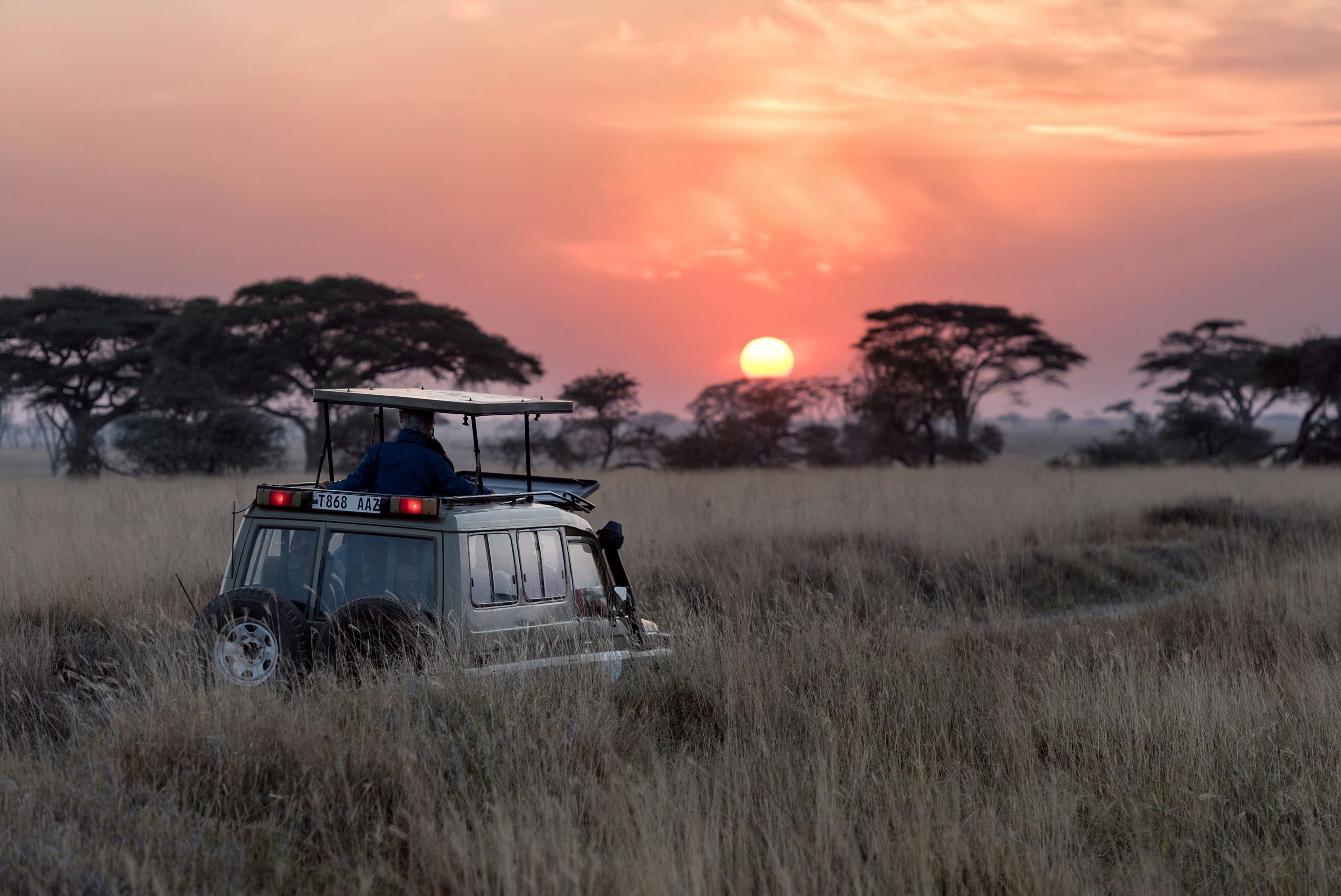
When embarking on a wildlife expedition, having an efficient water supply is essential for your survival. Proper hydration not only ensures optimum health but contributes significantly to the success of your adventure.
Your efficiency at managing water resources often spells the difference between a successful or disastrous expedition. Understanding how to source, purify, and store water can make your ordeal in wilderness less daunting.
Learn more about water tanks for your expedition at this link. Here you can find information on how septic tanks can be useful for long expeditions and store precious water.
Understanding Your Water Needs
Importantly, when embarking on a wildlife expedition, comprehending the necessity for adequate water supply isn't just vital; it's a question of survival.
Maintaining Hydration
Thirst isn't always an accurate indicator of your body's water needs. Hence, regularly drinking water aids in maintaining hydration during treks.
Navigate to the Centers for Disease Control and Prevention to further explore water treatment techniques for hiking, camping, and traveling.
Selecting Water Sources
According to experienced outdoors people, moving streams are often safer and cleaner than stagnant bodies. Reason being, moving water is less likely to contain parasites.
Beware though! Despite appearances, even the clearest stream may contain harmful bacteria. Therefore, always treat collected water prior to consumption.
Quality over Quantity
It's not solely about quantity; the quality of your water supply matters as well. Untreated water may lead to illness amidst unfamiliar terrains.
Utilize key tools like filtration systems or chemical tablets for treating water from natural sources. Ensuring safe drinking water enhances your overall expedition experience.
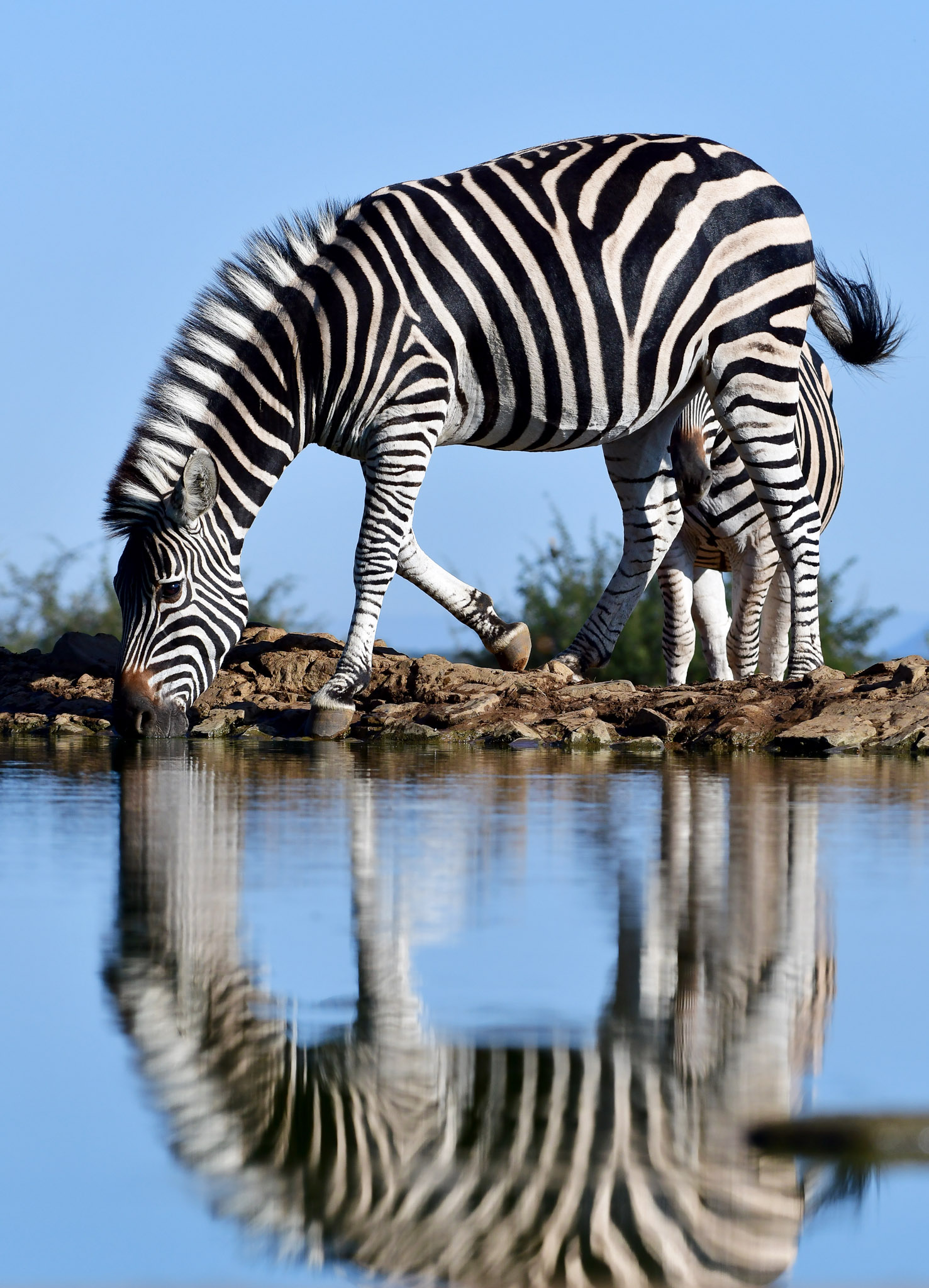 Zebra drinking at Last Word Madikwe
Zebra drinking at Last Word MadikweSelecting Appropriate Water Containers
Choosing a suitable water container for your expedition is crucial. You need a lightweight, durable, and sizable model, allowing comfortable transportation and sufficient storage.
Durable Materials
Containers made from robust materials such as BPA-free plastic or stainless steel ensure longevity. They can withstand harsh conditions and repeated usage on your adventures.
Stainless steel containers, though heavier, are great for their incredible durability. They resist dents and punctures better than plastic models.
Capacity Matters
The size of a water container plays an important role in your travel planning; it should hold enough water for the trip but remain portable.
Larger models are beneficial for groups while smaller ones suit solo travelers. Keep in mind that an average person needs at least two liters of water per day.
Easy Transportation
Your chosen container should be easy to carry. Look for a design featuring sturdy handles or straps to guarantee comfortable transportation.
Furthermore, collapsible designs can save space when not in use, making them an efficient choice.
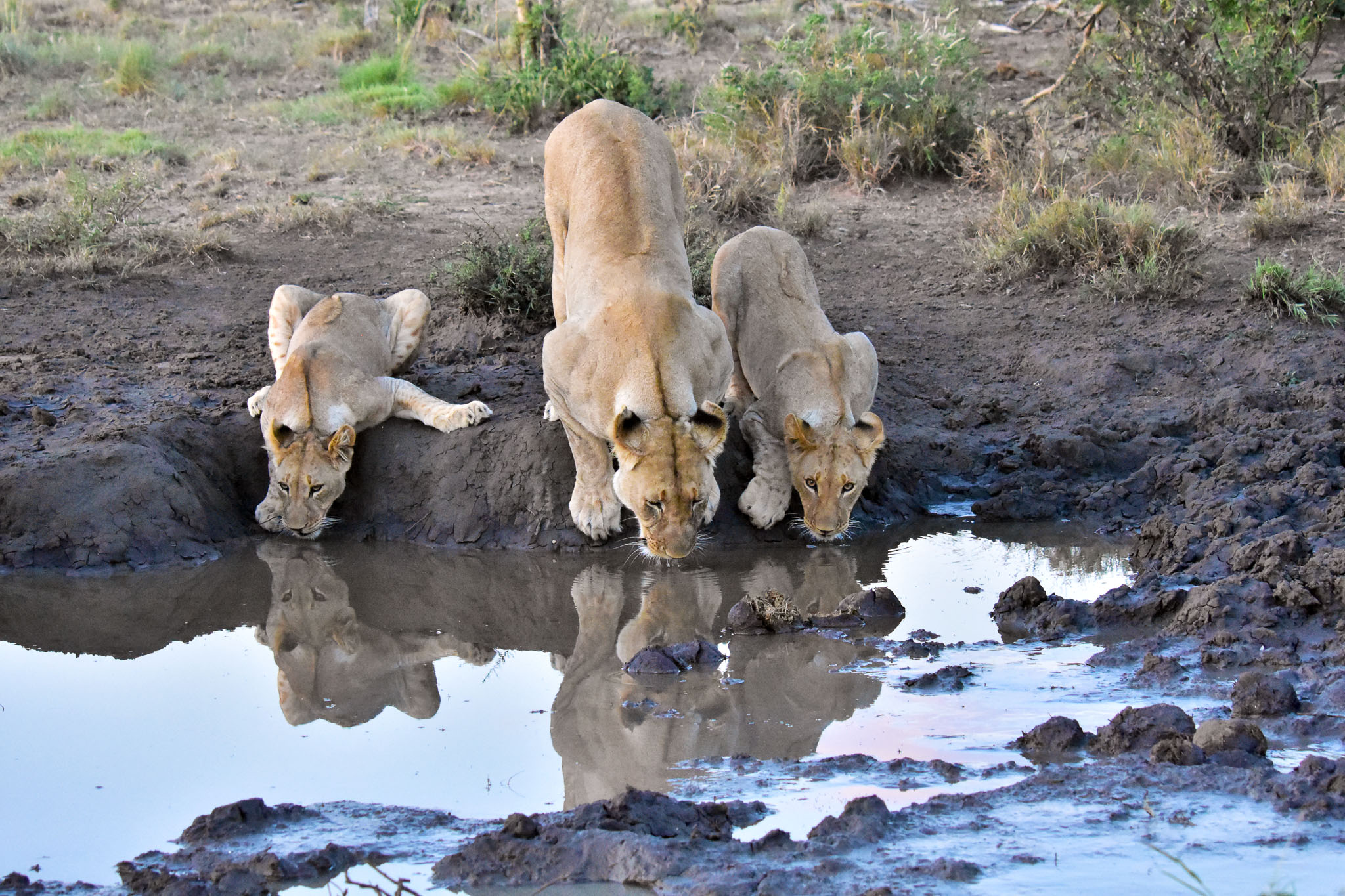 lioness and cubs drinking in Madikwe
lioness and cubs drinking in MadikwePacking Water for Scenic Tours
While preparing for an adventure, one crucial item should never be neglected – water. Hydration is the key to your sustenance and stamina in the wilderness.
Hydration Packs
Packing an efficient hydration pack allows easy access to water. Choose ones with large capacities and compact designs to save your backpack's space.
Hydration packs should be light but durable. They must withstand varying temperatures, keeping your water fresh and drinkable throughout the journey.
Water Filters
Consider carrying a portable water filter. These are lifesavers when you run out of packed water. They purify natural water bodies, making them safe for consumption.
You can learn about suitable filters on National Geographic's Alaska Cruise guide. The guide provides reliable advice on choosing the best portable water filters.
Liquid Concentrates
Addition of liquid concentrates or hydration tablets is another smart move as they not only provide essential electrolytes but also enhance the taste of water.
Maintaining Reserves
Last, but not least, always maintain a reserve. You never know when you could find yourself in a situation where this reserve might just be your savior.
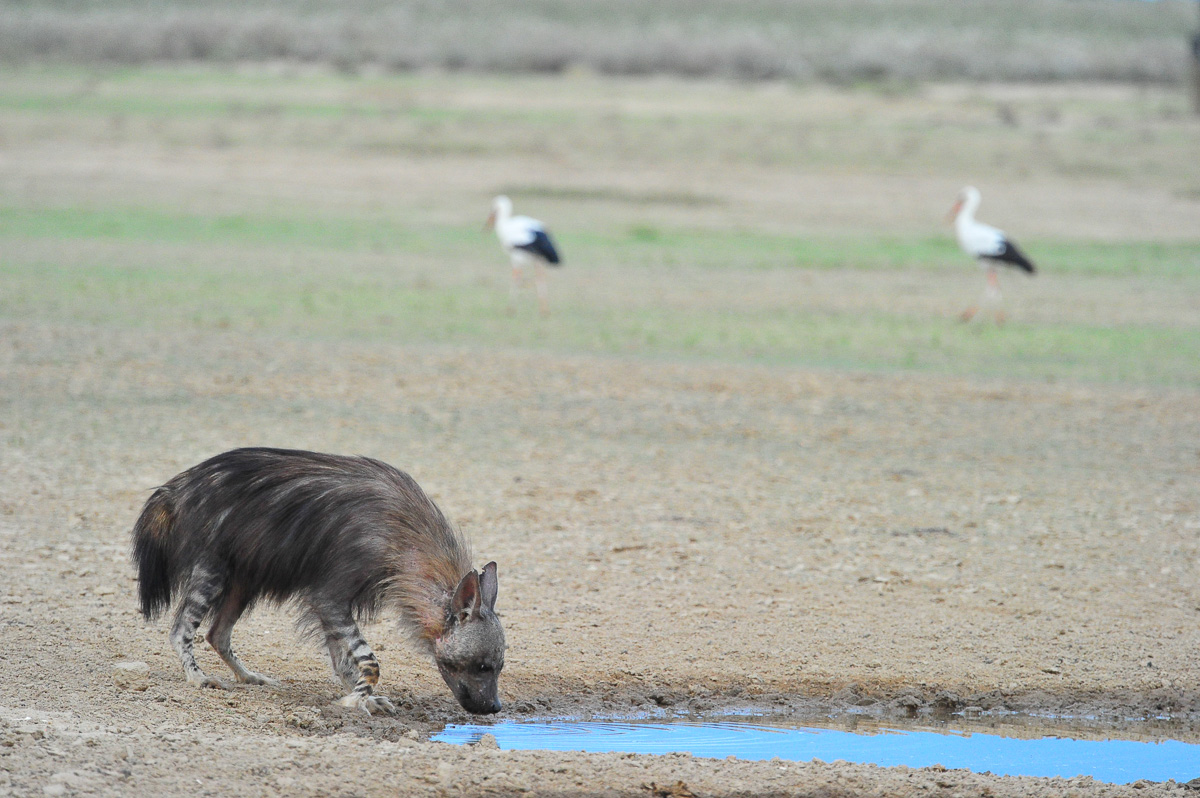 Brown hyena drinking at Polentswa waterhole in the Kgalagadi Transfrontier Park
Brown hyena drinking at Polentswa waterhole in the Kgalagadi Transfrontier ParkPlanning Water Supply for Wildlife Tours
Your wildlife expedition demands effective planning of water supply to ensure hydration needs are met under unpredictable outdoor conditions.
With varying climate and terrain, calculations for water requirements during your adventure can significantly vary.
Sustained access to clean water is instrumental in maintaining energy and morale, thereby defining the overall success of your expedition.
● Carry Portable Water Filters: They eliminate nearly all microbial waterborne contaminants while keeping the packing light.
● Equip Hydration Packs: Easy to carry, these gadgets can store large amounts of water safely and conveniently.
● Plan Water-source Stops: Utilize maps and local knowledge to identify natural sources of water on your route.
● Pack Purification Tablets: A compact solution to treat potentially unsafe water in an emergency.
Evaluating these strategies helps tailor an effective plan for managing water supply, addressing unique challenges posed by wildlife adventures.
An efficient preparedness not only ensures a healthy journey but also enhances the overall wildlife-tour experience, making it memorable for all the right reasons.
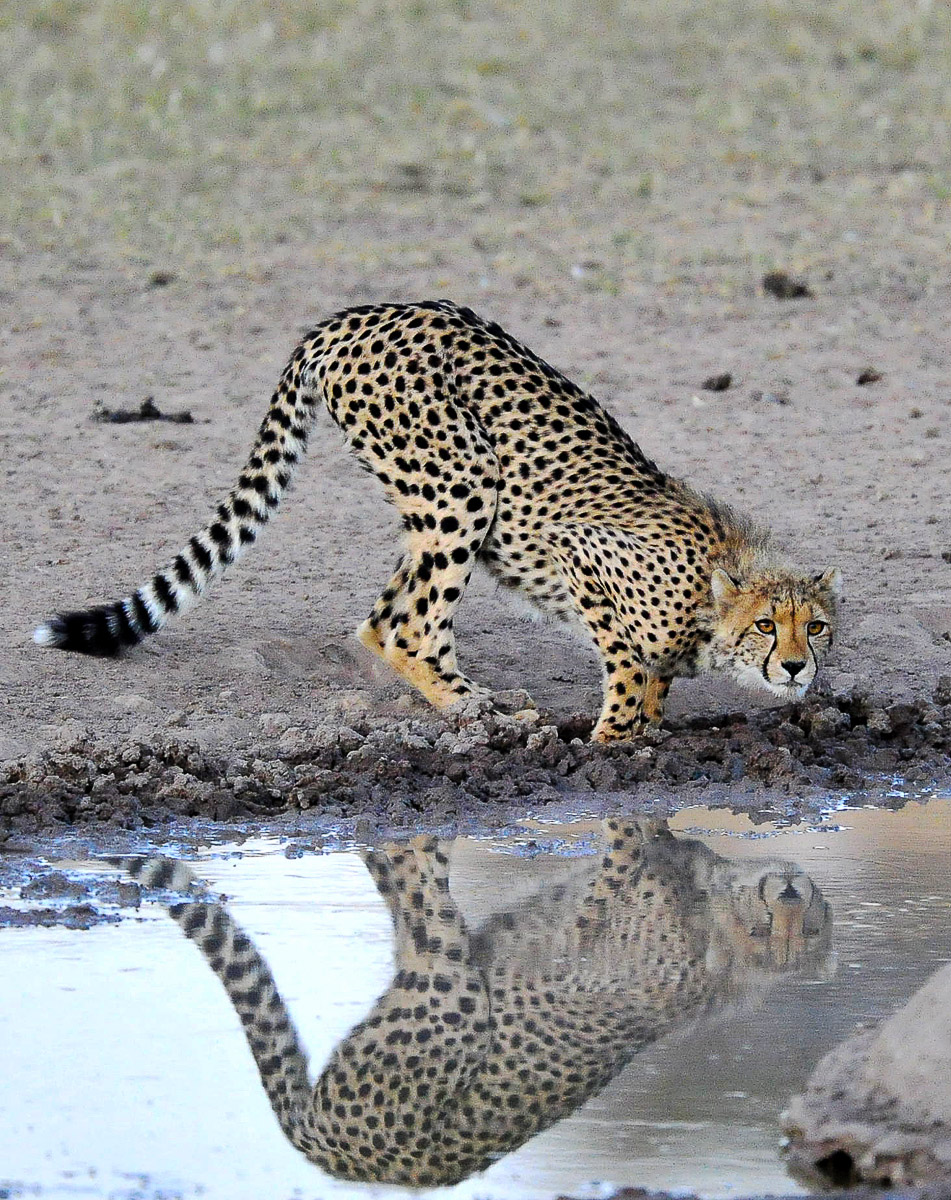 Young Cheetah drinking with reflection at Urikaruus camp waterhole in the Kgalagadi
Young Cheetah drinking with reflection at Urikaruus camp waterhole in the KgalagadiImportance of Conservation During Expeditions
The wilderness offers unmatched excitement, but your actions can significantly impact the environment. Striking a balance between adventure and conservation is crucial on any expedition.
While you journey through nature, remember that you are their guest. Adopting a conservation-minded attitude can ensure your actions do not disrupt the natural habitat.
● Mindful Water Usage: Remember to prevent water waste; use only what's necessary for hydration, cooking, and cleaning
● Sensitive Aquatic Ecosystems: Never disturb water bodies; they often house delicate marine species
● Water Source Protection: Refrain from contaminating water sources with biological waste
● Avoid Direct Stream Use: Instead of drinking directly from streams or lakes, consider using portable water filters.
You should also consider using sustainable methods of sourcing water. This could include collecting rainwater or purifying stream water.
Last but not least, remember your primary role in these expeditions is to observe and admire. Maintain a safe distance from wildlife and never feed them.
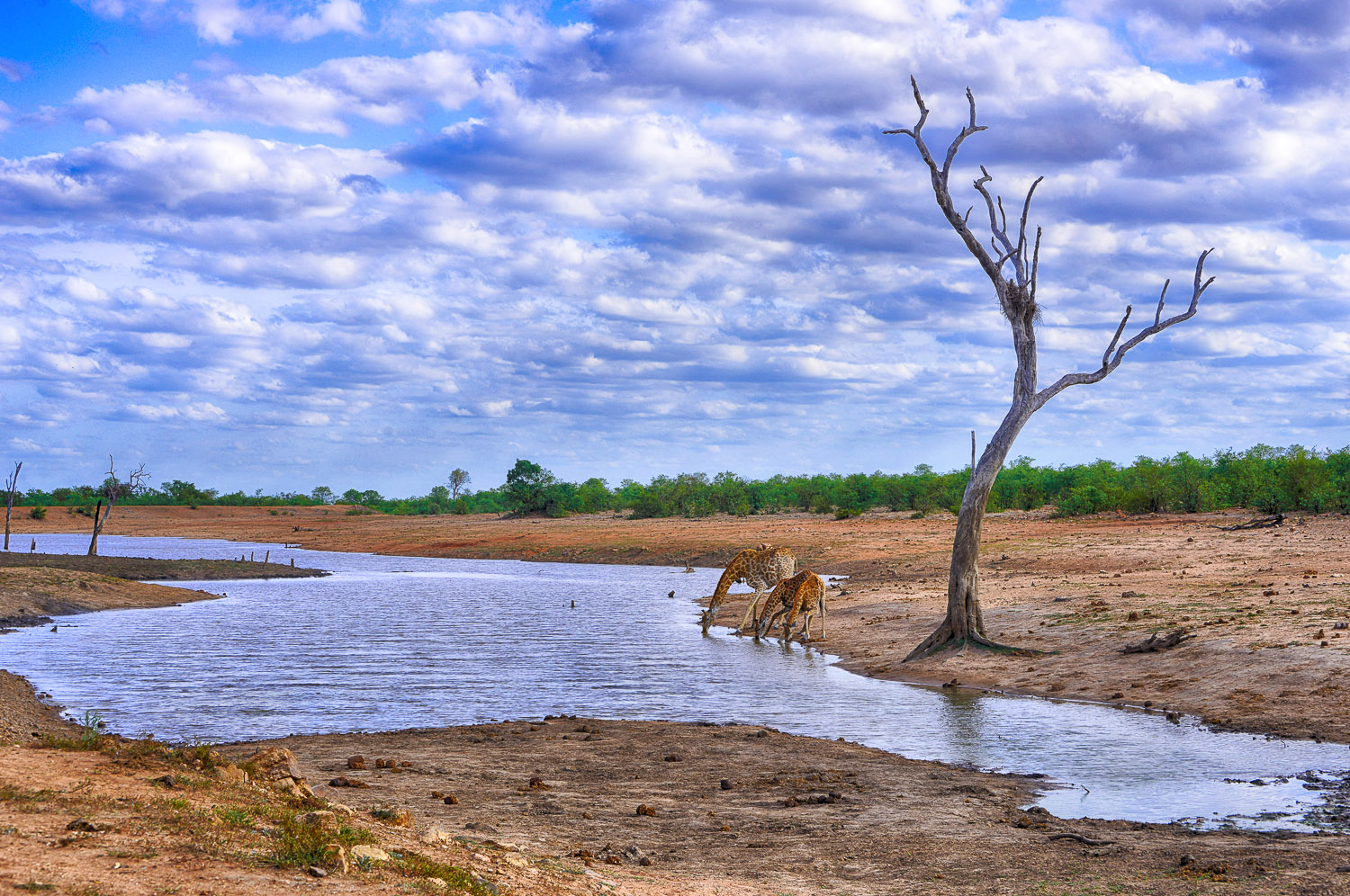 Giraffe drinking at Sable Dam on the S51 near Phalaborwa in the Kruger National Park
Giraffe drinking at Sable Dam on the S51 near Phalaborwa in the Kruger National ParkSafe Water Collection Techniques
Embarking on a wildlife expedition requires careful planning. Your water supply is paramount, as clean water aids in maintaining hydration and health.
Understanding how to safely gather water on your own when sources are limited or unforeseen circumstances arise can ensure your survival.
● Surface Water: Streams, rivers, and lakes are prime sources of fresh water. They should be treated or boiled thoroughly to eliminate pathogens.
● Rainwater Harvesting: A clean, unpolluted source of water. Catching rain in tarps or containers during wet periods can provide drinkable water.
● Dew Trapping: Early mornings can yield significant amounts of dew. Absorb it with a cloth then wring into a bottle.
● Snow/Ice Melting: Snow and ice can be melted for hydration but must also be treated for safety due to potential contaminants.
You need to efficiently capture and store what you collect. Carry collapsible containers for ease of transport while on the move.
Also, don't forget to treat your gathered water properly with compact purification methods like filter straw or iodine tablets.
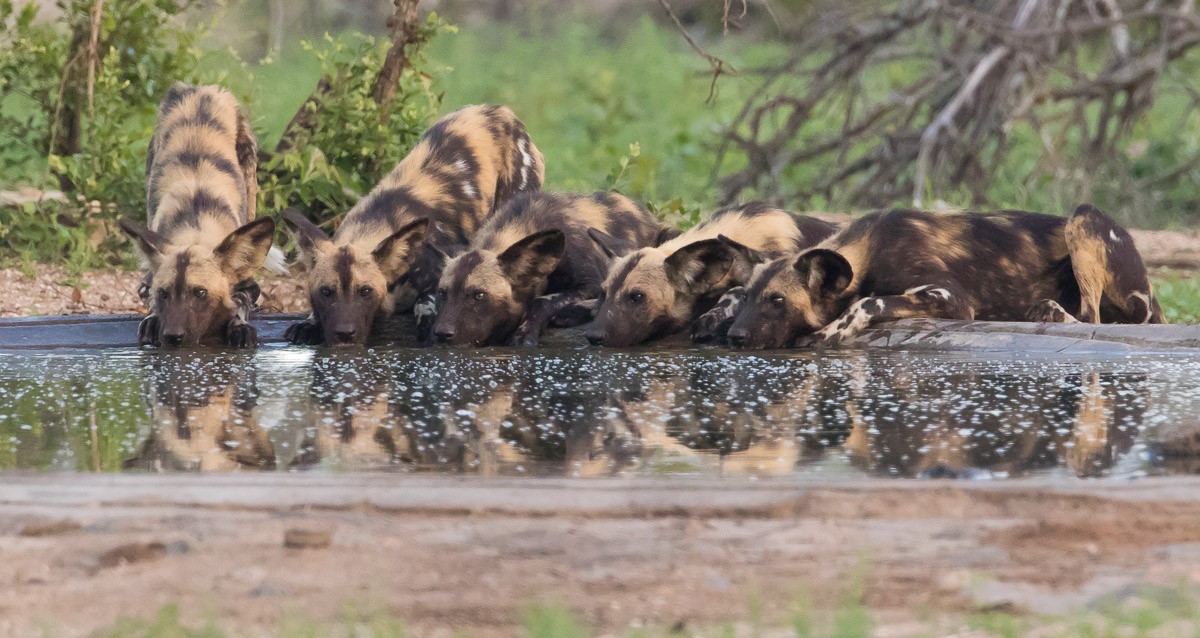 Wild dogs drinking at Orpen camp waterhole in the Kruger Park
Wild dogs drinking at Orpen camp waterhole in the Kruger ParkMethods for Purifying Natural Water Sources
You'll find multiple methods viable for purifying natural water sources while on a wildlife expedition. Each technique has unique considerations to note.
The decision often lies on your individual needs, equipment available, and other situational factors you might encounter during the trip.
1. Boiling: This traditional purification method effectively eliminates most bacteria and parasites. You need a heat source and a container to boil the water in.
2. Chemical treatment: Certain chemicals can be used to kill pathogens in water. Commonly used options include iodine tablets and chlorine dioxide.
3. Ultraviolet light (UV): Portable UV devices can provide quick and easy water purification, but they require batteries or an external power source.
4. Portable filters: These handy gadgets filter out bacterial contamination, making unsafe water drinkable. Their filter pore size is crucial in determining their effectiveness.
Selecting the right method for purifying natural water sources requires careful thought. You need to factor in practicality, effectiveness, and your specific circumstances.
Become accustomed to these methods before stepping into the wild. It may take some practice, but it's an invaluable skill to have during wildlife expeditions.
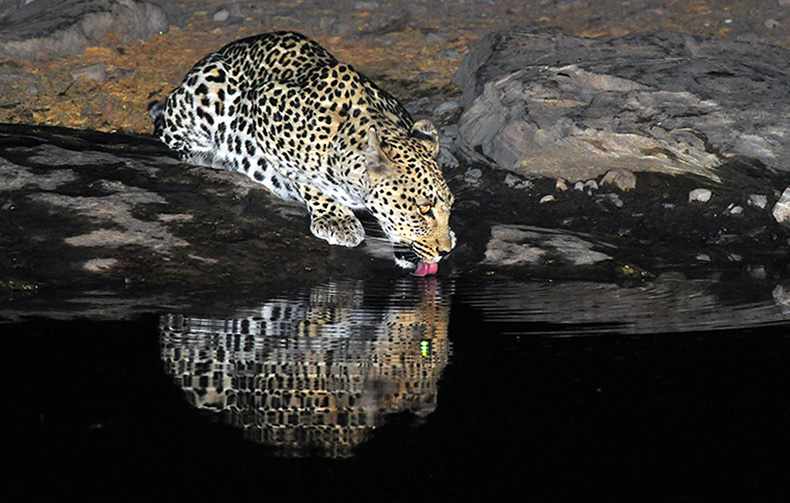 Leopard drinking at Halali camp waterhole in Etosha, Namibia
Leopard drinking at Halali camp waterhole in Etosha, NamibiaExpedition's Water Epilogue
As you venture into the wilderness, your water strategy is crucial. Remember to select durable containers, plan well, apply safe collection methods, and implement conservation. Cleanse natural sources carefully. Ensure your exciting journey stays hydrating and safe.
Return from Water Supply Essentials for Wildlife Expeditions to K2K Home Page
Return from Water Supply Essentials for Wildlife Expeditions to Survival Skills Page
To make a safari rental booking in South Africa, Botswana or Namibia click here
"It's 768 pages of the most amazing information. It consists of, well, everything really. Photography info...area info...hidden roads..special places....what they have seen almost road by road. Where to stay just outside the Park...camp information. It takes quite a lot to impress me but I really feel that this book, which was 7 years in the making, is exceptional." - Janey Coetzee, founder of CAROK (Camps and Roads of Kruger) South Africa
"Having a passion for the region itself and having to know about all dynamics, water holes and ideal roads for a period of 6 years - I wish I had this guide on my first trip already!" - Morkel Erasmus, Secunda, South Africa
"Mario and Jenny take you to places that are not always visited, and their descriptions of the more remote camps will allow you to make an informed decision without wasting time and money" - Bob & Sherry Shepardson, DeBary, Florida, USA
"Your time and money are valuable and the information in this book will help you save both." - Don Stilton, Florida, USA
"I highly recommend the book to anyone visiting Etosha National Park to photograph the animals - or anyone considering an African photography safari in the future." - Anne Darling, Cognac, France
"As a photographer and someone who has visited and taken photographs in the Pilanesberg National Park, I can safely say that with the knowledge gained from this eBook, your experiences and photographs will be much more memorable." - Alastair Stewart, BC, Canada
"This work is so much more than an eBook, because it is also a guide, a tutorial, an inspiration and a must-have for anyone interested in wildlife photography" - Findtripinfo.com, USA
Photo Safaris on a Private Vehicle - just You, the guide & the animals!









New! Comments
Have your say about what you just read! Please leave us a comment in the box below.